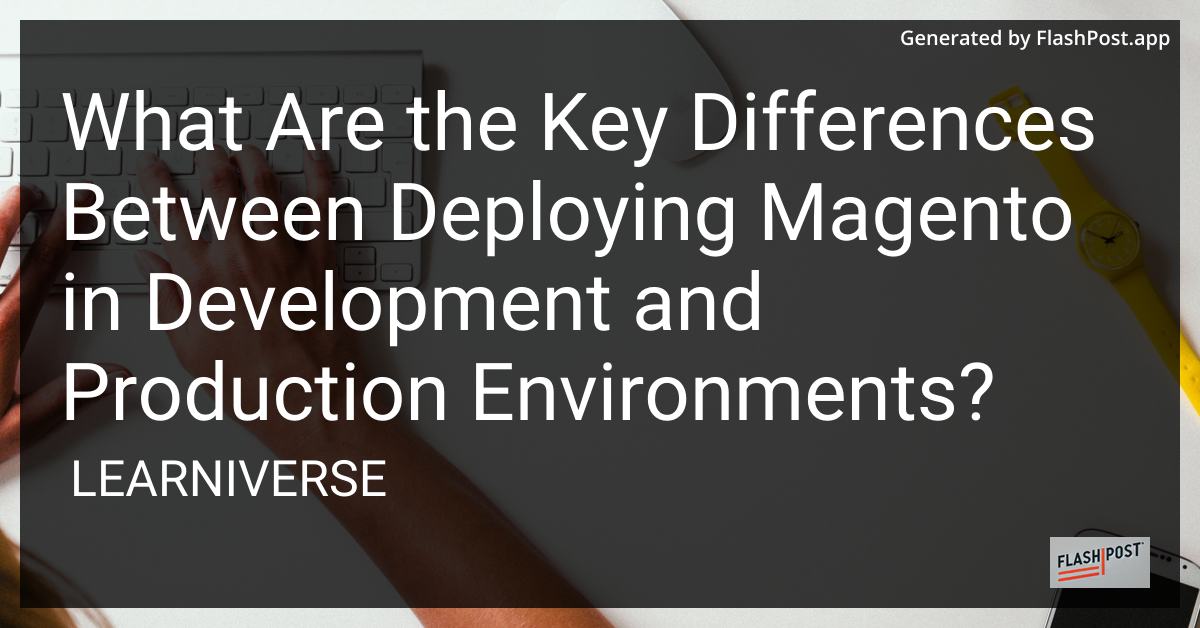What Are the Key Differences Between Deploying Magento in Development and Production Environments?

In the fast-evolving world of eCommerce, Magento stands out as a powerful platform. However, understanding the nuances between deploying Magento in development and production environments is crucial to harnessing its full potential. By learning these key differences, developers can ensure smooth transitions and optimal performance.
1. Environment Configuration
Development Environment
In a development environment, Magento is configured to facilitate rapid changes and debugging. Key characteristics include:
- Developer Mode: This mode is ideal for debugging and testing. It provides full error reporting and disables static file caching, allowing developers to see changes immediately.
- Error Logging: Detailed error logs are generated to help developers identify issues quickly.
- Increased Verbosity: The verbosity of logs and error messages is heightened to provide comprehensive insights for debugging.
Production Environment
Deploying Magento in a production environment requires stability and performance optimization:
- Production Mode: The production environment utilizes full-page caching to enhance performance. Errors are logged but not displayed to users.
- Error Suppression: User-facing error messages are minimized to prevent exposure of sensitive information.
- Static Content Deployment: Static files are deployed to optimize speed and reduce server load.
2. Performance Optimization
Development Environment
- Caching: Generally disabled to allow developers to see code changes without clearing caches.
- Profiling Tools: Enabled to help developers analyze code execution paths and performance bottlenecks.
Production Environment
- Caching: Fully enabled, including full-page caching and bundled JavaScript, to boost site performance.
- Optimization Tools: Various optimization techniques, including minification and merging of CSS/JS files, are employed to reduce load times.
- Scalability Considerations: Load balancing and CDN integrations are often implemented to handle increased traffic.
3. Security Practices
Development Environment
- Relaxed Security: Typically, security settings are relaxed to facilitate testing and debugging.
- Sandboxing: Ensures that any malicious scripts or tests do not affect the live environment.
Production Environment
- Strict Security Measures: Includes HTTPS enforcement, regular security patches, and compliance with PCI DSS standards.
- Monitoring and Alerts: Continuous monitoring for potential threats and regular security audits are essential.
4. Data Management
Development Environment
- Sample Data: Often uses sample data sets to simulate real-world transactions without risking actual customer information.
- Regular Resets: The environment can frequently be reset to accommodate new testing scenarios.
Production Environment
- Live Data Handling: Directly interacts with real customer data, necessitating robust data protection measures.
- Data Backups: Regular data backups ensures that recovery is possible in case of data loss or corruption.
Further Reading on Magento Deployment
For more detailed guides on deploying Magento, check out these resources:
- Magento Deployment on Vultr
- Magento Deployment on Cloudways
- AWS Magento Deployment
- Magento Deployment on Hosting
- Deploying Magento on Web Hosting
By understanding and implementing the appropriate configurations and optimizations for your environment, you can streamline Magento deployments and enhance your eCommerce site's performance and security.